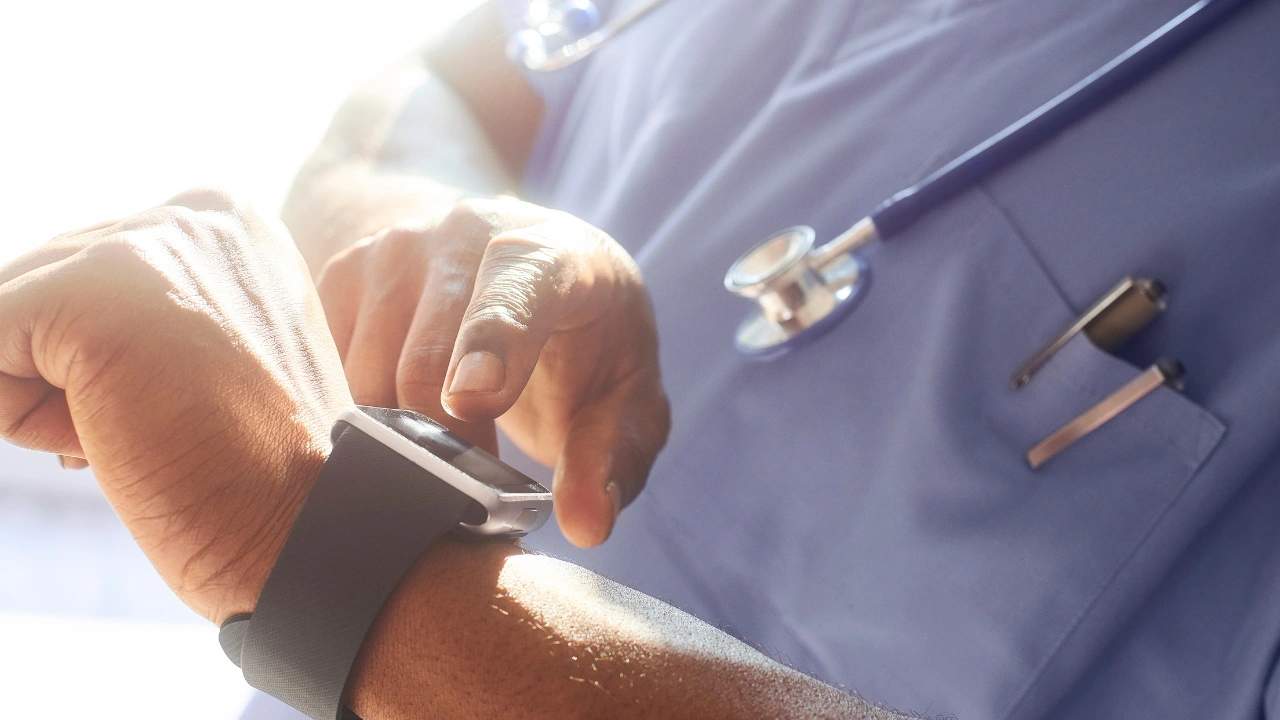The growing role of RPM and key considerations for clinicians are a rapidly expanding component of modern medicine, using digital technology to monitor patients outside of conventional clinical settings. By capturing patient-generated health data, from vital signs to heart rhythms, RPM can support earlier detection of health changes, may help reduce hospital admissions, and is intended to increase patient engagement in managing chronic conditions.
This technological boom, however, has created a challenge for medical providers. The market is saturated with devices, from consumer smartwatches to specialized medical sensors. Patients often present data from their personal devices, forcing clinicians to decide which are clinically validated, interoperable, and compliant with regulatory standards.
This guide offers a clinical comparison of medical-grade and consumer wearables, focusing on regulatory status, data accuracy, and security to help providers make informed decisions.
1. The Regulatory Requirements: Why FDA Status is the First Filter
Before evaluating a device’s technical features, clinicians must evaluate regulatory status. The distinction between a wellness gadget and a medical instrument is critical for reimbursement, patient safety, and provider liability.
The foundational rule, as stipulated by the Centers for Medicare & Medicaid Services (CMS), is that a device used for RPM must meet the FDA’s definition of a medical device. This hinges on “intended use.” A fitness tracker that counts steps is a low-risk wellness device. However, when a manufacturer markets a feature for a medical purpose, such as detecting an irregular heart rhythm, it becomes a medical device and must undergo FDA review.
Devices subject to FDA oversight typically follow one of two pathways:
- FDA 510(k) Clearance: The majority of RPM devices (blood pressure monitors, pulse oximeters) are moderate-risk Class II devices that follow the 510(k) premarket notification pathway. A manufacturer must demonstrate that its device is “substantially equivalent” to a legally marketed predicate device. This is a comparative review, does not independently establish clinical effectiveness.
- Premarket Approval (PMA): Reserved for high-risk Class III devices, the Premarket Approval (PMA) pathway is the FDA’s most rigorous premarket review pathway. It requires sufficient scientific evidence, typically from clinical trials, to independently establish the device’s safety and effectiveness.
A device’s FDA regulatory status is the essential first consideration when distinguishing consumer electronics from clinical-grade medical devices.
2. Clinical Evidence and Data Accuracy
Once a device clears regulatory review, its data quality must still be evaluated, as medical-grade and consumer-grade wearables are built and validated differently, and may yield data with differing levels of accuracy and clinical reliability.
Medical-grade devices are designed and validated for clinical use, with accuracy benchmarked against established “gold standard” devices in formal clinical studies. Consumer wearables are primarily designed for consumer wellness applications, and their validation for general wellness metrics is often validated using manufacturer-led studies, which may not align with clinical standards.
3. Data Security and HIPAA Compliance
A common misconception is that all health data from a wearable is automatically protected by the Health Insurance Portability and Accountability Act of 1996 (HIPAA). This is incorrect. HIPAA applies to “covered entities” (like clinics) and their “business associates”.
When an individual uses their own smartwatch, the data is governed by the manufacturer’s consumer privacy policy, not HIPAA. The moment a provider instructs a patient to submit that data for clinical use, it becomes Protected Health Information (PHI), and the provider is fully responsible for its protection. Consumer device ecosystems are not built to meet HIPAA’s rigorous standards, transmitting data over may not consistently meet HIPAA’s technical safeguards.
Medical-grade RPM systems are designed to support clinical care and HIPAA compliance, with end-to-end encryption and secure, HIPAA-compliant platforms. Importantly, vendors of these systems enter into a formal Business Associate Agreement (BAA), a legally binding contract that shares the responsibility and liability for protecting PHI.
4. Integration, Workflow, and Clinical Use Cases
For RPM data to have clinical value, it must integrate into the provider’s workflow. A major barrier to adoption is the lack of seamless interoperability with Electronic Health Record (EHR) systems.
- Consumer Devices do not integrate directly with EHRs. Data resides on proprietary platforms like Apple Health, required additional middleware solutions to enter a clinical workflow. This often relies on patients manually sharing data, which may limit integration into clinical workflows.
- Medical-Grade Systems are designed for interoperability, often using standards like FHIR to allow for the automated flow of data directly into the patient’s chart. This supports provider-directed remote management and care coordination.
The choice of device should match the clinical task:
- Appropriate Use for Consumer Wearables: These devices are well-suited for encouraging patient engagement, promoting healthy behaviors, and opportunistic screening. An AFib alert from a smartwatch does not constitute a diagnosis but may serve as a prompt for further clinical evaluation for a follow-up with a definitive medical-grade tool.
- Essential Use for Medical-Grade Devices: For active disease management where treatment decisions are made, devices with validated clinical accuracy are required. This includes managing congestive heart failure with daily weight and blood pressure data, monitoring post-operative recovery with wearable patches, and using continuous glucose monitors for diabetes.
The Horizon: AI and the Future Standard of Care
The field of RPM is rapidly evolving, driven by the convergence of consumer and medical technology and the increasing role of artificial intelligence (AI). AI algorithms can analyze continuous data streams to identify subtle patterns, supporting a shift toward more proactive care models.
Emerging research suggests AI models may help predict clinical deterioration—such as heart failure decompensation—earlier than traditional monitoring by analyzing trends in heart rate, respiratory rate, and activity. This capability supports a shift toward more proactive care models, where clinical value will increasingly depend on validated analytics in addition to reliable hardware.
DrKumo: Advancing Smart Wearables for Clinical-Grade RPM
In the evolving landscape of Remote Patient Monitoring, DrKumo combines clinically validated devices with user-friendly design. Unlike consumer wearables designed primarily for lifestyle tracking, DrKumo’s platform is purpose-built for clinical use—combining FDA-cleared devices, real-time data transmission, and seamless EHR integration. This supports CMS and HIPAA compliance requirements and provides clinically reliable data to inform decision-making.
DrKumo’s secure digital health ecosystem supports an extensive range of smart wearables, from continuous glucose monitors to blood pressure devices, all unified under an intelligent AI/ML-powered cloud platform. By delivering validated, actionable insights directly into clinical workflows, DrKumo enables providers to support more proactive approaches to care, while increasing patient engagement through access to their health data.
Takeaways
To realize the clinical potential of RPM, clinicians must adopt a deliberate, evidence-based approach to device selection. Medical-grade devices offer well-documented advantages in regulatory compliance, clinical validation, security, and integration for the active management of disease. Consumer wearables are useful devices for engagement and screening but are generally not appropriate for reimbursable RPM programs under current CMS guidelines.
Providers should use the following checklist when evaluating any wearable device for clinical use:
- Define the Clinical Goal: Is it for wellness and screening, or for active disease management?
- Verify Regulatory Status: Is the device FDA-cleared for the specific intended use?
- Scrutinize the Evidence: Look beyond marketing claims and understand the real-world accuracy and predictive value.
- Confirm Security & Compliance: Is the entire data pathway HIPAA-compliant, and will the vendor sign a Business Associate Agreement?
- Assess Workflow Integration: Does the data flow seamlessly into the EHR, or does it require manual, out-of-workflow processes?
- Consider the Patient: Is the device easy for the target patient population to use consistently and correctly?
By applying this rigorous framework, healthcare organizations can confidently navigate the device landscape and harness the power of remote monitoring to improve the future of patient care.
Looking to harness the full potential of smart wearables for RPM? Contact DrKumo today to explore secure, medical-grade solutions that redefine patient care.
Disclaimer: This article is for informational purposes only and does not constitute medical, legal, or regulatory advice. Providers should consult FDA guidance, CMS regulations, and compliance experts before selecting or implementing wearable devices for clinical use.








